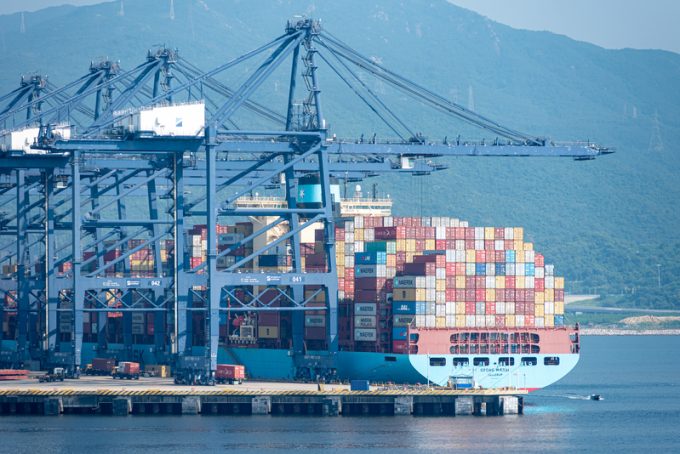Liners unveil Asia-Europe FAK price hikes to arrest steady rate decline
Container shipping lines are looking for a hike in Asia-Europe spot freight rates, announcing a ...

A Red Sea crisis resolution could be far more dramatic for container lines than if their re-routings continue well into the year, senior Maersk executives have suggested.
During yesterday’s earnings call, Maersk outlined how freight rates and industry capacity were expected to be affected if container ships were suddenly able to transit the Red Sea and Suez Canal this quarter, versus a full year of disruption.
Chief financial officer Patrick Jany described Maersk’s guidance as “two extreme scenarios”, and admitted that the crisis “has a certain benefit, because of the additional revenue”, and although it had also led to increased costs, the carrier was largely able to recoup those from shippers.
He said: “As the Red Sea [crisis] started to unfold, that did not change the prevailing levels contracts were being signed up at.
“We are able to pass on the additional cost and some surcharges for the further cost that we will have… and we’ve been able to put that on top as a separate line on the contract. So that is what is going to be able to provide an uplift to Q1,” added Mr Jany.
However, he explained these contracts state that the moment a vessel sails through the Suez Canal again, surcharges would be rescinded, “basically in that same week”.
Maersk suggested that, in this instance, rates would see a steep decline, perhaps reaching October 2023 levels, falling $990 per teu for Asia to Europe, according to Xeneta’s XSI, by April 2024. The current market average for Asia-Europe shipments is $4,591 per teu, according to Xeneta, which Maersk said it believed was the peak.
This would be a short-term win for shippers, but would leave carriers with “additional costs to unwind the situation in the Red Sea”.
Mr Jany said this scenario “will drag [down Maersk’s] performance in Q2 immediately”.
Furthermore, Maersk’s data indicated that if normal sailings resumed this quarter, the market would be faced with a sudden 6% oversupply of capacity, which would further increase, to 8%, by the end of the year.
However, he continued: “If we imagine that the [Red Sea] situation continues for the full year, then you, in very simplistic terms, could imagine that you have a repeat of the Q1… as the year progresses, which could lead to a break-even scenario.”
In this instance, the industry would have longer to balance out capacity, and Maersk forecasted a more balanced supply-demand in Q2, slightly increasing to 2% overcapacity by Q4.
And while rates are expected to decline as capacity is added, the decrease would occur at a much smoother rate.
Maersk concluded: “Red Sea disruption will help alleviate ocean losses in Q1, but the overall effect will depend on duration and how quickly additional capacity comes into service, leading to a wide range of scenarios for the year.”
The Danish carrier’s forecast indicates that in both scenarios, rates will eventually converge in Q4, with reversion towards mid-December 23 levels of $1,415 per teu for Asia-Europe, according to Xeneta.
Comment on this article
Rajeev Kathuria
February 18, 2024 at 10:05 amSince the Ocean Freight may soften, it would be Carrier to win the Loyalty of the customer must give the CASH BACK for the Surcharges which they levied during the Red Sea situation